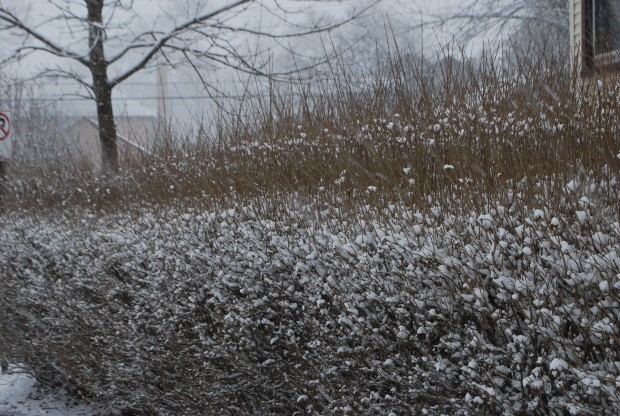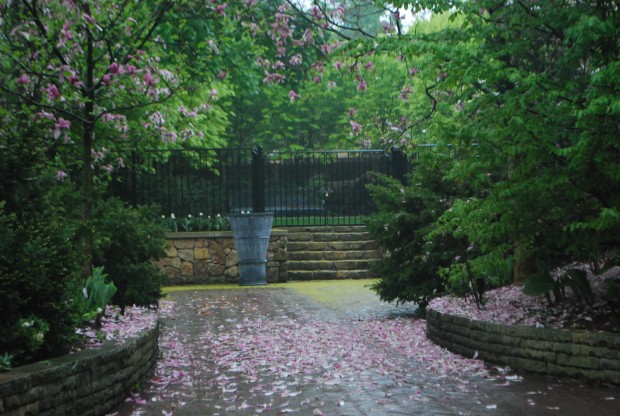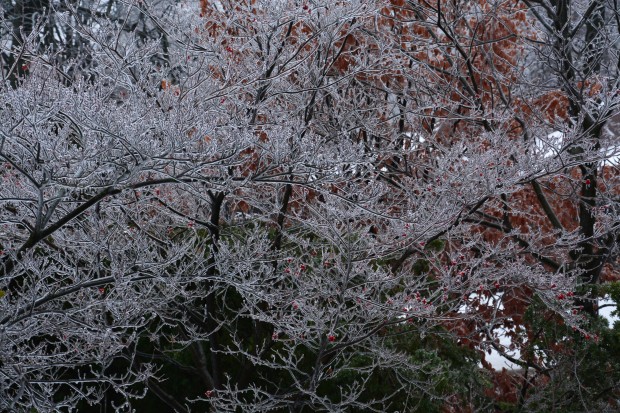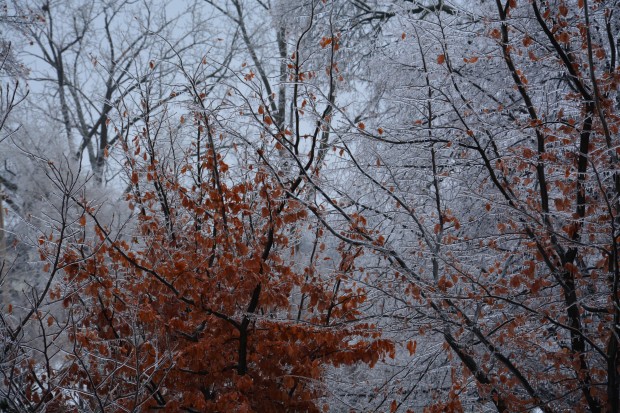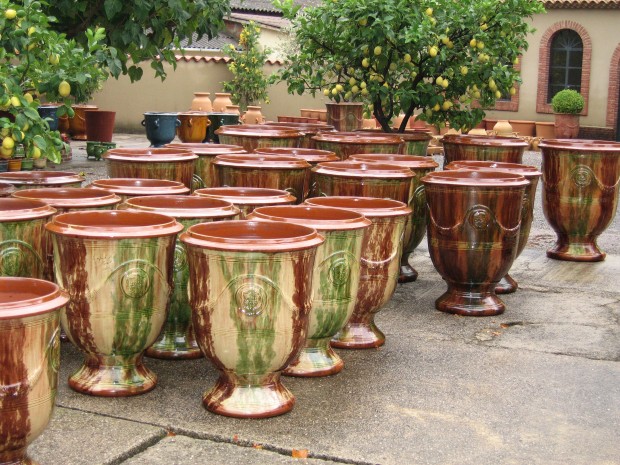 We are on the edge of the end of a year. The furthest edge. In just a few hours, that year will be part of the past. There will be discussion-a retrospective. Some memories will be sentimental. It is easy to remember the roses, and gloss over the beetles. We are likewise on the edge of a new year. In a few hours, we will cross over the leading edge of a new year-to an unknown but greatly anticipated future. It is an interesting place to be-on the edge. Great design, no matter the discipline, tends to hover, and thrive there. Edgy may not describe my shining hour. I suspect I am just too old. But as a designer I am very interested in composition. Composition, in my opinion, is much ado about edges. These French glazed pots have beautiful edges. The top edge is compound. The sides are sleek and precisely contoured. The edge that meets the ground is generous and hefty. What I would plant in them has everything to do with the shape, size, color and decoration of the pot.
We are on the edge of the end of a year. The furthest edge. In just a few hours, that year will be part of the past. There will be discussion-a retrospective. Some memories will be sentimental. It is easy to remember the roses, and gloss over the beetles. We are likewise on the edge of a new year. In a few hours, we will cross over the leading edge of a new year-to an unknown but greatly anticipated future. It is an interesting place to be-on the edge. Great design, no matter the discipline, tends to hover, and thrive there. Edgy may not describe my shining hour. I suspect I am just too old. But as a designer I am very interested in composition. Composition, in my opinion, is much ado about edges. These French glazed pots have beautiful edges. The top edge is compound. The sides are sleek and precisely contoured. The edge that meets the ground is generous and hefty. What I would plant in them has everything to do with the shape, size, color and decoration of the pot.
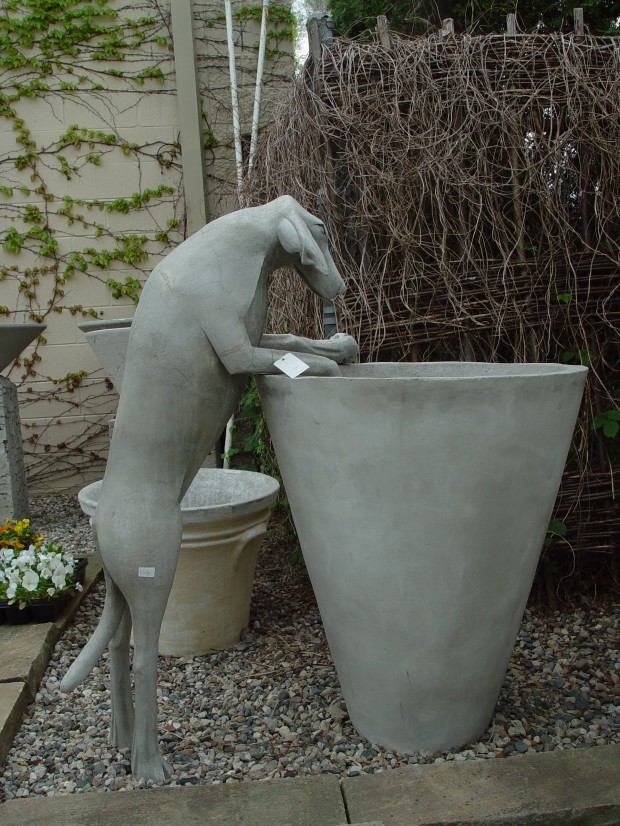 Composing seasonal plantings in pots is all about creating a world unique, complete, and believable, in a space notable for its sharply defined edges. A pot has a distinct shape. A top, a bottom, and 2 sides. The four sides frame an expression. Much like a frame contains a painting. Much like the composition of a painting has four edges. No matter whether you choose to respect or breach the edges, the treatment of the edges will dominate a certain part of the discussion. How I design a planting begins with the space in question. I have always wondered how the person who purchased this concrete pot with its companion dog chose to plant it. The top edge is abrupt, and unadorned. This pot could have plants draping over and down the sides-or not. Were the paws of the dog still visible? Did the dog appear to be enchanted by the fragrance of the flowers, or was he staring down a bug at eye level?
Composing seasonal plantings in pots is all about creating a world unique, complete, and believable, in a space notable for its sharply defined edges. A pot has a distinct shape. A top, a bottom, and 2 sides. The four sides frame an expression. Much like a frame contains a painting. Much like the composition of a painting has four edges. No matter whether you choose to respect or breach the edges, the treatment of the edges will dominate a certain part of the discussion. How I design a planting begins with the space in question. I have always wondered how the person who purchased this concrete pot with its companion dog chose to plant it. The top edge is abrupt, and unadorned. This pot could have plants draping over and down the sides-or not. Were the paws of the dog still visible? Did the dog appear to be enchanted by the fragrance of the flowers, or was he staring down a bug at eye level?
 Containers with ornament and detail at the top edge may suffer from a mature planting that obscures that detail. Some pots demand visual respect of the edges. Were I to plant these containers, I would concentrate on plants that lift off. The visual relationship between the planting and the pot is a relationship worth exploring. These pots would look equally fine in a garden, unplanted. I did not plant any containers when I was young. I could barely afford to buy plants-much less containers. Everything I planted went in the ground. But even then, I was concerned about my composition. My gardens had edges. My grass had edges. I would frame some views, and disguise others.
Containers with ornament and detail at the top edge may suffer from a mature planting that obscures that detail. Some pots demand visual respect of the edges. Were I to plant these containers, I would concentrate on plants that lift off. The visual relationship between the planting and the pot is a relationship worth exploring. These pots would look equally fine in a garden, unplanted. I did not plant any containers when I was young. I could barely afford to buy plants-much less containers. Everything I planted went in the ground. But even then, I was concerned about my composition. My gardens had edges. My grass had edges. I would frame some views, and disguise others.
 I will confess I have always edged my beds. I would strike a flat shovel deep down on an edge, and toss the soil up into the bed. I liked making a clear decision about shape and direction – for better, or for worse. Any composition that was sloppy was unsatisfying. Every gardener has their own point of view, and I have mine. No matter how exuberant and wild the planting, the container holds it all together. This late 19th century French pot from Biot is a container of breathtaking beauty. If I were to plant it, I would go up. The rim is too beautiful to obscure. As strong as the rim edge is the slight foot at the bottom. I would place this pot on a plinth, no matter how slight, so that detail would not be lost.
I will confess I have always edged my beds. I would strike a flat shovel deep down on an edge, and toss the soil up into the bed. I liked making a clear decision about shape and direction – for better, or for worse. Any composition that was sloppy was unsatisfying. Every gardener has their own point of view, and I have mine. No matter how exuberant and wild the planting, the container holds it all together. This late 19th century French pot from Biot is a container of breathtaking beauty. If I were to plant it, I would go up. The rim is too beautiful to obscure. As strong as the rim edge is the slight foot at the bottom. I would place this pot on a plinth, no matter how slight, so that detail would not be lost.
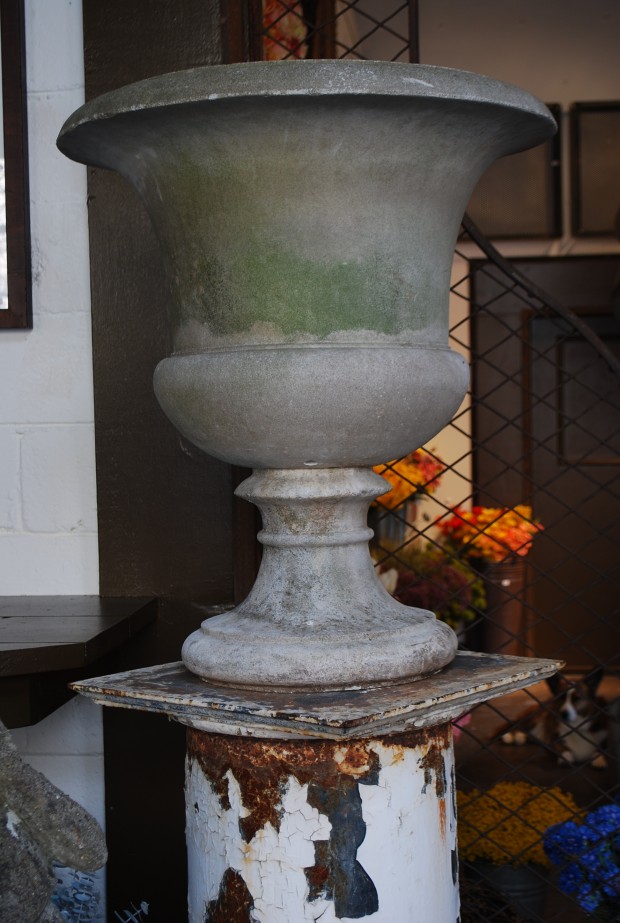 This vintage stone campagna shaped urn is beautifully simple. Much is made of the top edge. The compound curvy shape and foot is hefty, yet graceful. Any pot is an expression of the garden ready to be more.
This vintage stone campagna shaped urn is beautifully simple. Much is made of the top edge. The compound curvy shape and foot is hefty, yet graceful. Any pot is an expression of the garden ready to be more.
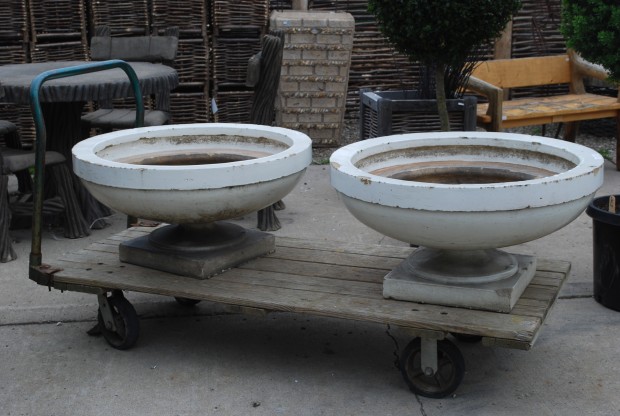 This pair of glazed stoneware pots made in Chicago in the 1930’s have generous rims. The body of the pots-low and wide. The square foot is large enough to visually support that width. Would I plant them low and very wide-yes. I respect the edges established by the maker. However I might compose plantings for these pots would be as much about the architecture of the pots as the horticulture.
This pair of glazed stoneware pots made in Chicago in the 1930’s have generous rims. The body of the pots-low and wide. The square foot is large enough to visually support that width. Would I plant them low and very wide-yes. I respect the edges established by the maker. However I might compose plantings for these pots would be as much about the architecture of the pots as the horticulture.
 Over the past 18 years, I have had the pleasure of an exposure to pots, containers, boxes, buckets, troughs, and urns of every description. I feel quite certain that part what the future holds involves containers the likes of which I have never seen before. I like that promise inherent to the future. Those people who made it their business to fashion a vehicle by which a small collection of plants can grow and prosper-I appreciate them. The range of shapes, styles and colors is astonishing. The containers I have chosen for my own garden are friendly to the period and architecture of my house. I favor bigger pots over small ones-I like having a lot of room to plant. A pot whose top is 30 inches across represents an embarrassment of riches in container planting space. That size space in my garden is a trifle. Given that my property is very small, I like gardening opportunities that seem large.
Over the past 18 years, I have had the pleasure of an exposure to pots, containers, boxes, buckets, troughs, and urns of every description. I feel quite certain that part what the future holds involves containers the likes of which I have never seen before. I like that promise inherent to the future. Those people who made it their business to fashion a vehicle by which a small collection of plants can grow and prosper-I appreciate them. The range of shapes, styles and colors is astonishing. The containers I have chosen for my own garden are friendly to the period and architecture of my house. I favor bigger pots over small ones-I like having a lot of room to plant. A pot whose top is 30 inches across represents an embarrassment of riches in container planting space. That size space in my garden is a trifle. Given that my property is very small, I like gardening opportunities that seem large.
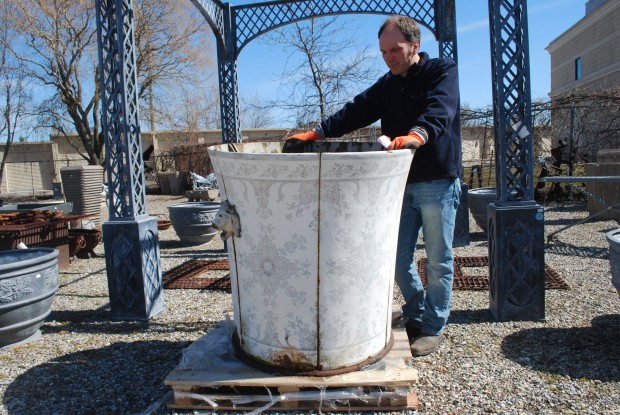 This giant enameled pot of French origin circa the 19th century-astonishing in its size. Buck did a great job of repairing it. Every year it is my pleasure to plant it for the summer, and the winter. Its edges are of a scale and shape that challenge me. In my favor? A container planting rules for but one season. You have another shot-next year.
This giant enameled pot of French origin circa the 19th century-astonishing in its size. Buck did a great job of repairing it. Every year it is my pleasure to plant it for the summer, and the winter. Its edges are of a scale and shape that challenge me. In my favor? A container planting rules for but one season. You have another shot-next year.
 These English cast stone urns are an invitation to a seasonal party. They are also large enough to comfortably contain the rootball of a good sized boxwood.
These English cast stone urns are an invitation to a seasonal party. They are also large enough to comfortably contain the rootball of a good sized boxwood.
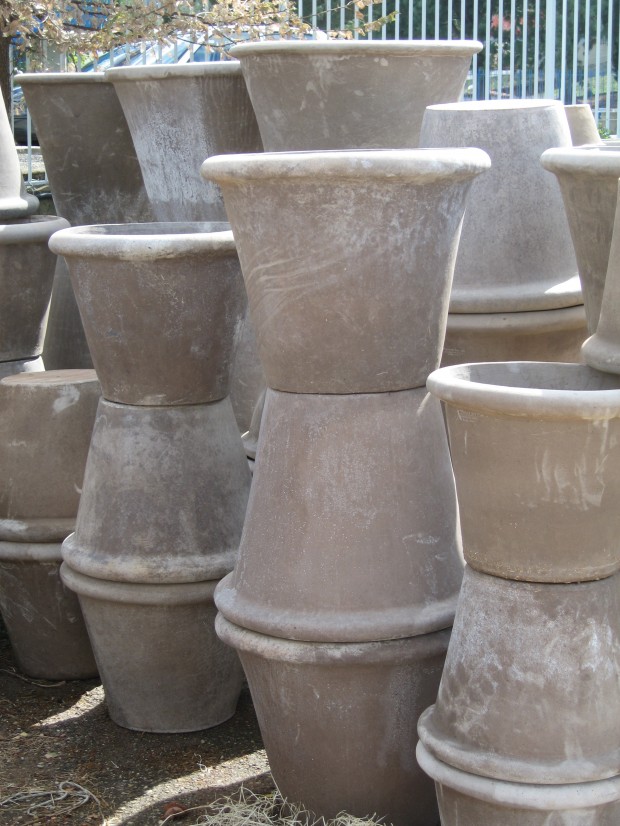 The pots hand made by Francesca del Re are of the toughest frostproof stoneware it has ever been my pleasure to meet. The design of the pots-surprisingly soft. The edges are forgiving. Plant away. This pot can take whatever dream you have the mind to dish out. A traditional container planting will be just as successful as a contemporary scheme. The edges of these pots are friendly, and forgiving. The planting will make the pot.
The pots hand made by Francesca del Re are of the toughest frostproof stoneware it has ever been my pleasure to meet. The design of the pots-surprisingly soft. The edges are forgiving. Plant away. This pot can take whatever dream you have the mind to dish out. A traditional container planting will be just as successful as a contemporary scheme. The edges of these pots are friendly, and forgiving. The planting will make the pot.
 This antique English glazed pot manufactured by Doulton – who knows how a gardener might interpret this pot. A placement where the shape and decoration could be easily seen would be the first move worth making. It would be lovely on a plinth, or on a wall. The shape and decoration is bold. An oakleaf hydrangea might be just the plant for this pot.
This antique English glazed pot manufactured by Doulton – who knows how a gardener might interpret this pot. A placement where the shape and decoration could be easily seen would be the first move worth making. It would be lovely on a plinth, or on a wall. The shape and decoration is bold. An oakleaf hydrangea might be just the plant for this pot.
 By way of contrast, these massive and benign cast stone urns manufactured from a design by Frank Lloyd Wright, would handle almost any idea for planting you had in mind.
By way of contrast, these massive and benign cast stone urns manufactured from a design by Frank Lloyd Wright, would handle almost any idea for planting you had in mind.
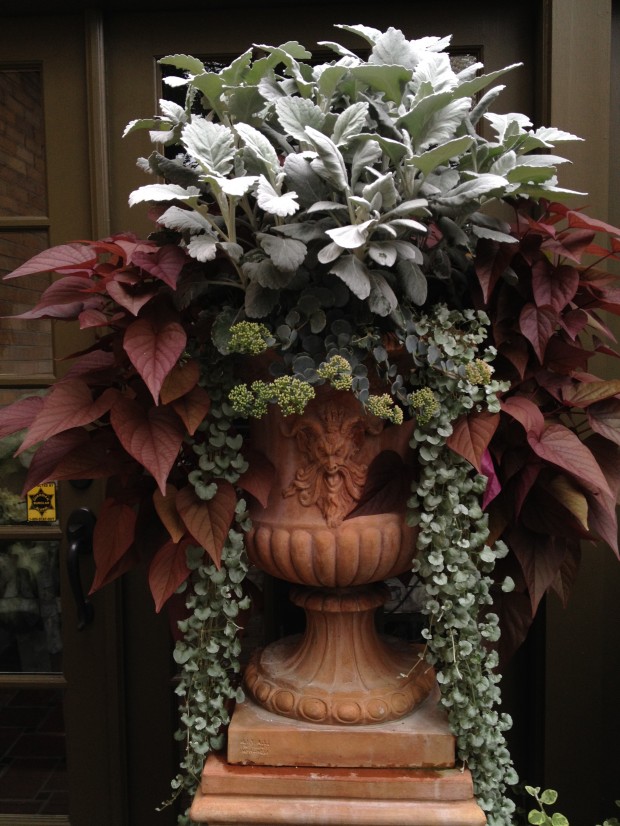 This is a picture of my most favorite seasonal container, ever. Italian terracotta is a personal favorite. The relationship of the container to the plants-as edgy as I am ever likely to get. This coming year, I will have another chance to compose and plant. How good does this sound? Happy New Year!
This is a picture of my most favorite seasonal container, ever. Italian terracotta is a personal favorite. The relationship of the container to the plants-as edgy as I am ever likely to get. This coming year, I will have another chance to compose and plant. How good does this sound? Happy New Year!
